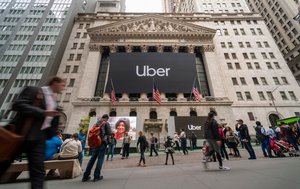Online platforms have enabled people to access new forms of work, opening the door to temporary or non-traditional work schedules. Ridesharing and food delivery are the primary examples. These platforms, however, operate within siloed environments, with the terms set in favour of the platform owner. In some cases, these online platforms are in a race to the bottom, putting the worker at a disadvantage by trying to lower the cost of labour, resulting in lower earning potential for the worker.
In this video, Wingham Rowan explains how we can harness the power of online platforms to benefit the worker and corporation equally; the concept is called “modern markets for all.” Instead of each app maintaining its own database of users and its own terms, governments could provide centralized systems that connect the workforce with employers. These systems could enable a larger pool of talent, provide better benefits to the workers, and monitor for opportunities to optimize the workers’ skills to allow them to access more work opportunities through other government programs and supports. This is not some utopian fantasy, says Wingham — it is commercially and technologically viable.
After watching the video, read more about “modern markets for all” in Wingham’s CIGI policy brief here.


